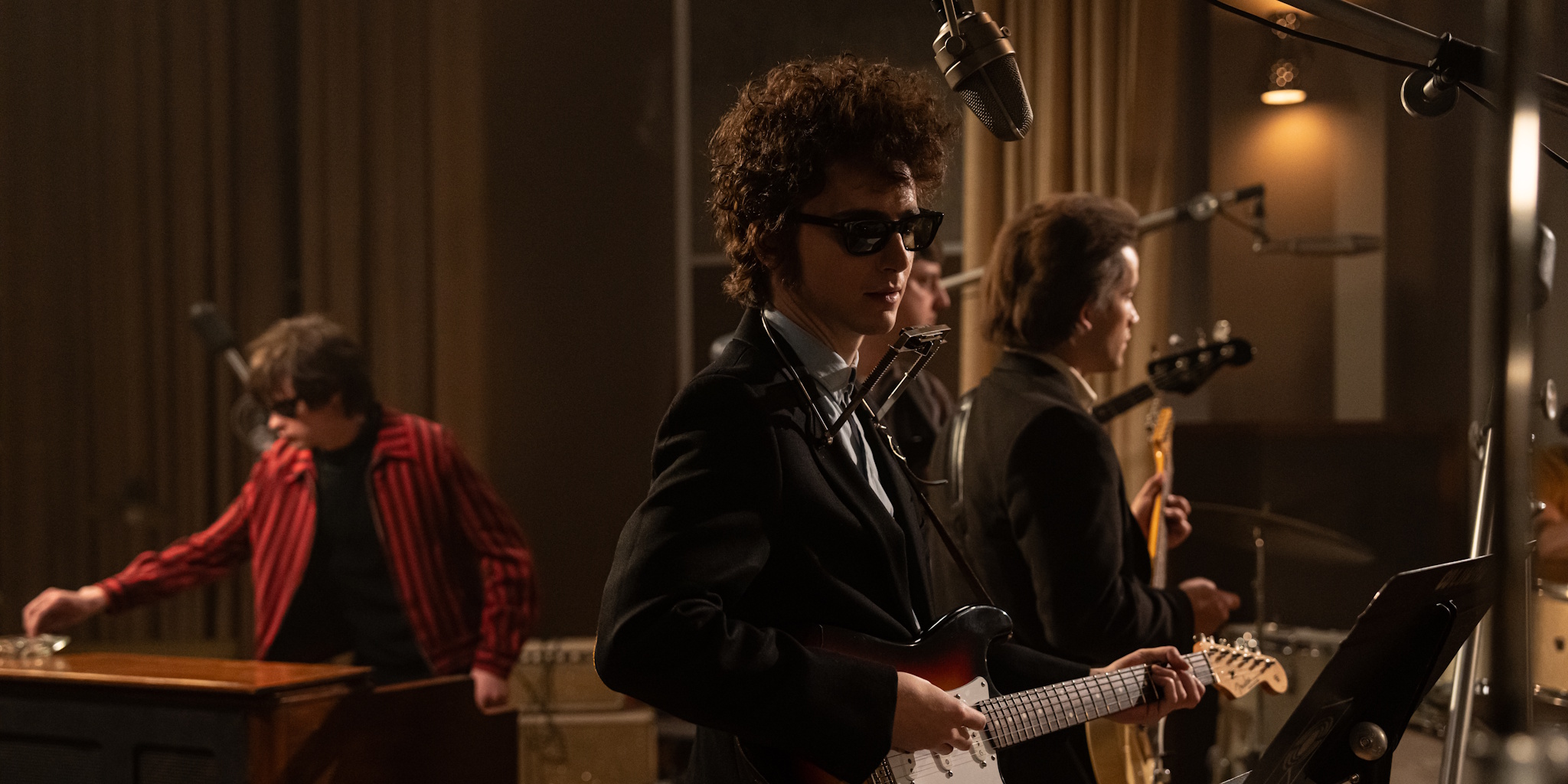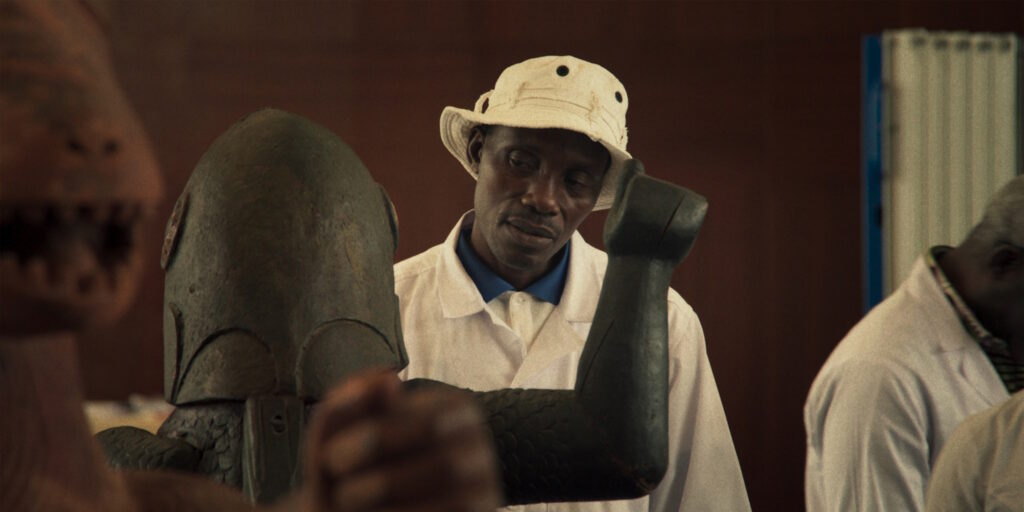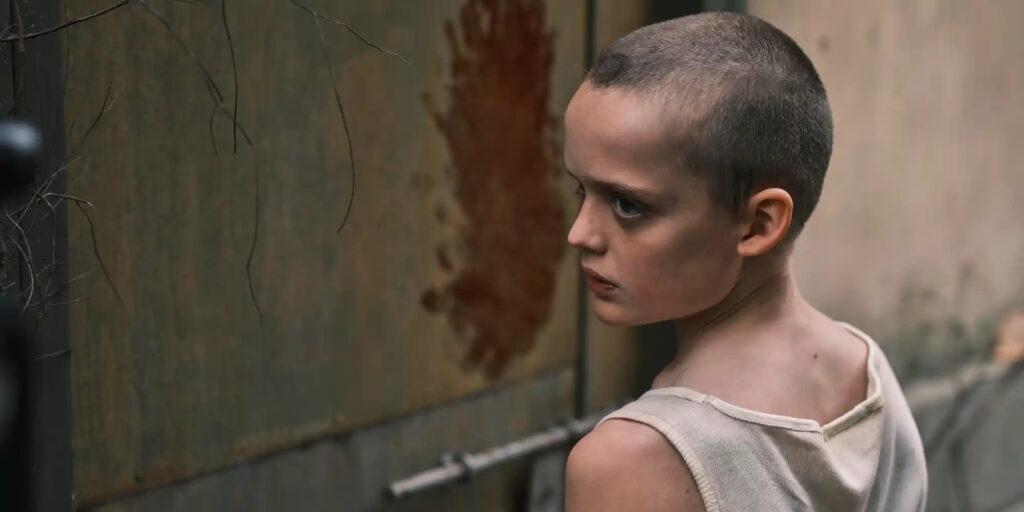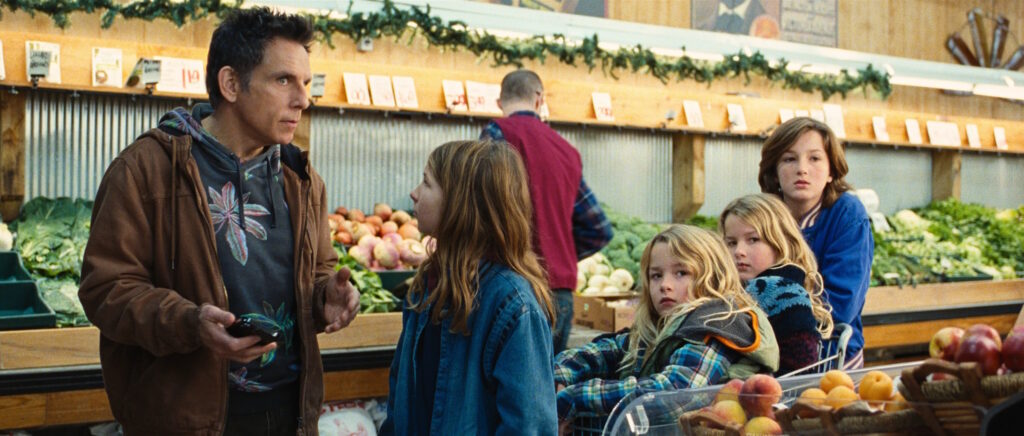“You’re kind of an asshole, Bob.”
A weary Joan Baez (Monica Barbaro) makes that barbed, amusingly profane observation to her sometime lover and singing partner Bob Dylan (Timothée Chalamet) about two-thirds through A Complete Unknown, and by this point in the film, even his most forgivingly worshipful fans will no doubt agree. Characteristically, the unruffled Dylan – who has abandoned Baez’s Chelsea Hotel bed in the early-morning hours to workshop a song on his guitar – makes no effort to dispute the claim: Although undeniably self-absorbed, he’s also acutely self-aware.
One of the surprising delights of this Dylan biopic – which covers only the five eventful years, 1961-65, when he made his dizzying ascent from aspiring Greenwich Village folksinger to international star – is the filmmakers’ refusal to sand down the abrasively rough edges of their famously iconoclastic subject, whose punk-before-punk defiance of polite convention and monomaniacal creative intensity manage to attract and alienate in roughly equal measure.
As a longtime Dylan admirer – if not quite an obsessive Dylanologist – I approached A Complete Unknown with wariness, and I was unprepared for how quickly the film breached my defenses and completely won me over. From the moment the wide-eyed 19-year-old Dylan steps from his hitched ride onto a wintry Village street, director James Mangold and his collaborators – especially production designer François Audouy and cinematographer Phedon Papamichael – create a fully immersive approximation of early-’60s America. That environmental verisimilitude is matched by the actors’ startlingly effective embodiments of the many familiar figures who populate the film, with the principals not merely mimicking but fully inhabiting their real-life models.
Chalamet deserves particular praise for his multifaceted, subtly shaded portrait of Dylan, with his radically contradictory mix of ambition and curiosity, vulnerability and arrogance, anger and empathy, naiveté and intelligence. In particular, he perfectly captures Dylan’s provocative combination of blunt, bracing honesty and guarded, maddening opacity. Just as crucially, Chalamet’s musical performances, which could have easily veered into disastrous parody, offer convincing simulations – but never exact copies – of Dylan’s voice and delivery. Edward Norton as Pete Seeger is similarly believable and musically adept, and although Baez’s highly distinctive soprano is beyond Barbaro’s range, she conveys the regal authority of the then-reigning Queen of Folk, and she and Chalamet display a volatile chemistry on and off stage.
Elle Fanning as Sylvie Russo – Dylan’s actual NYC girlfriend Suze Rotolo in all important particulars but name – is the only featured actor largely unburdened by the audience’s pre-existing knowledge of the film’s more famous subjects. To some unfortunate degree, her character conforms to Hollywood type: the lover left behind, the victim flattened as Dylan’s snowballing success accumulates frightening size and velocity on its headlong path. But if Fanning isn’t allowed the same agency as her dazzling Catherine in the Hulu series The Great, who marries steely intellect to screwball energy, Sylvie provides A Complete Unknown with both an emotional throughline and a valuable outsider’s perspective as Dylan becomes enmeshed in the music industry’s machinery. Sylvie also shares key political and cultural information with the sponge-like Dylan, and she watches with a touch of awestruck wonder as he absorbs and then transmutes that raw material into musical gold.
The speed with which the ever-mutable Dylan endlessly transforms himself and the adamance with which he refuses to conform to others’ expectations serve as recurrent motifs in the film. In one brief but revealing scene early in their relationship, for example, Bob accompanies Sylvie to a civil-rights demonstration, and he pauses to scan the crowd: Dylan may well support the cause, but with that appraising look, it’s clear he clocks a potential audience, and a stream of era-defining topical songs begins to flow. The film echoes that recognition – here’s something of value to me – when Baez stumbles on Dylan performing “Masters of War” in a Village coffeehouse as the Cuban Missile Crisis climaxes: Her rapt gaze hints at both romantic and musical possibility, and a mutually beneficial (or, in more cynical terms, exploitative) relationship ensues.
Even more smartly, A Complete Unknown sets up a subsequent call-and-response sequence when the now-celebrated Dylan introduces “The Times They Are A-Changin’” to a Newport Folk Festival audience. Although the song is unfamiliar, the large crowd quickly picks up on the title refrain, enthusiastically bellowing it back to Dylan. Off to the side, a positively beaming Pete Seeger sees in this passionate response the culmination of his long-held dream of using music to effect social change, but up on the stage Dylan appears to regard the idolatry as more akin to a nightmare. Rejecting his designation as the “voice of a generation,” Dylan soon turns to the personal, nonpolitical, and defiantly enigmatic songs that follow his “protest” period – a point the film later emphasizes when Dylan, on a joint tour with Baez, flatly refuses to indulge the imploring audience by performing his signature “Blowin’ in the Wind.”
This metamorphosis of Dylan – the first of many throughout his life and career – culminates in A Complete Unknown with his “going electric” at the 1965 Newport fest, permanently alienating folk’s purity police. Hopelessly clouded by myth and an ever-multiplying array of conflicting eyewitness accounts, Dylan’s electrified Newport performance is a folk-music Rashomon, and no one should look to the film for a definitive account. If anything, A Complete Unknown is quite likely to add new layers of confusion with its alteration of even such verifiable facts as the setlist (which included two solo acoustic performances – “It’s All Over Now, Baby Blue” and “Tambourine Man” – not just the one song featured here). But if the film hyperbolically ups the ante – e.g., by having Dylan and the band dodge objects hurled at the stage – the volcanic chaos that erupted was real, and A Complete Unknown beautifully captures the fiery rock explosion and its smoldering aftermath.
As its depiction of Newport ’65 demonstrates, A Complete Unknown deliberately distorts the historical record, often using extreme compression to provide a maximum of information in a minimum of time. A prominent instance of this occurs near the film’s outset, when Dylan pays his first visit to Woody Guthrie (Scoot McNairy) in Greystone Park Psychiatric Hospital. Not only does Dylan meet his sadly debilitated idol, laid low by Huntington’s disease, but sitting at Woody’s bedside is fellow folkie Pete Seeger, and with the two legends’ encouragement, the youngster performs – quite movingly – his original “Song to Woody.” Much of this is fanciful – although Dylan certainly visited Woody soon after his NYC arrival, Seeger wasn’t present, and he had yet to write his Guthrie tribute – but Mangold and co-writer Jay Cocks fudge the facts for efficiency and enhanced drama.
Similarly, when Dylan makes his debut at Gerde’s Folk City, the film pretends that Seeger, Baez, New York Times critic (and eventual Dylan biographer) Robert Shelton, future manager Albert Grossman (Dan Fogler), and Columbia Records producer John Hammond (David Alan Basche) all were gathered in attendance and properly agog at his talent. Grossman is so taken, he falsely claims the singer as a client and sidles up to Hammond to pitch Dylan to Columbia. Again, this is entirely outlandish contrivance: Dylan’s first appearance at Gerde’s was as an opener for John Lee Hooker in April 1961, Hammond only encountered Dylan when he played harmonica at a recording session for folksinger Carolyn Hester in November 1961, and Grossman initially heard Dylan at the Gaslight and didn’t sign the singer until 1962. But however fictive, what a marvelous means of introducing several major players – including Baez, whom Dylan pointedly says has “a pretty voice, maybe too pretty” – who will figure prominently in Dylan’s future.
Such fictional elements – most based loosely in fact but shifted in time or place – continue to appear in the film, perhaps most outrageously during the Newport ’65 performance, where amid the cascading boos an audience member shouts “Judas,” and Dylan bitterly replies, “I don’t believe you.” That iconic exchange, of course, took place the following year, in Manchester, England, during the tumultuous tour with the Hawks (later the Band).
And that pivotal performance of “The Times They Are A-Changin’” referenced several paragraphs back? It never occurred.
In a different context, these falsities might undercut A Complete Unknown’s credibility: No one expects a biopic to directly reflect lived reality, but too many deviations from the truth – or at least what we know of it – erode the audience’s trust. But given Dylan’s own comfort with playful (or useful) lies – the biography he offered early in his career was wholly invented, as the film notes – A Complete Unknown’s distortions, time-shifts, and outright fictions seem oddly appropriate, even imperative: They capture Dylan’s mercurial, changeable essence, add clarifying illumination, and provide splashes of delightful color. Did Johnny Cash (Boyd Holbrook) actually encourage Dylan to “track some mud on the carpet” at Newport? Perhaps, perhaps not, but that feels utterly real and right, and the film benefits from it.
A Complete Unknown’s most successful and precision-targeted creation is Bob and Sylvie’s impromptu first date: a matinee screening of Now, Voyager. That ’40s melodrama chronicles the transformation of Charlotte Vale (Bette Davis) from repressed wallflower into vibrant, attractive woman, and discussing the film afterward at a diner – with movie and meal both paid for by Sylvie – Bob forcefully insists that this change makes Charlotte “different,” not “better,” and Dylan clearly has his own recent reinvention – as a roistering carny – front of mind. Much later, the film offers a fine rhyming sequence when Bob impulsively presses Sylvie, with whom he’s long ago split, to accompany him to Newport. In their hotel room, he charmingly replicates the famed Now, Voyager scene in which Paul Henreid simultaneously lights a pair of cigarettes and offers one to Davis, with the gesture providing a sign of their shared intimacy. But Sylvie soon recognizes that the relationship is permanently ruptured, and as she departs on a ferry, she repeats Now, Voyager’s final lines to a pleading Bob: “Don’t let’s ask for the moon. We have the stars.” That farewell provides a lovely close to this chapter in Dylan’s life, and it also works as a precursor to another imminent leavetaking: the electrified performance that will send the singer roaring into into the future, his motorcycle open full throttle, as he bids folk a fuck-you adieu.
As aptly as Now, Voyager’s plot speaks to Dylan’s own serial transfigurations, Mangold and Cocks no doubt also wanted to recall the source of the film’s title, the poem “The Untold Want” by that multitude-containing proto-Dylan Walt Whitman: “The untold want by life and land ne’er granted./Now, voyager, sail thou forth, to seek and find.”
And is there any doubt that Dylan, now an octogenarian but still following in Woody’s footsteps on his Never Ending Tour, continues to quest?
[For those seeking more traditionally factual accounts of this period of Dylan’s life, I’d suggest the book on which A Complete Unknown is based, Elijah Wald’s Dylan Goes Electric: Newport, Seeger, Dylan, and the Night That Split the Sixties. For further detail, turn to David Hadju’s Positively Fourth Street: The Lives and Times of Joan Baez, Bob Dylan, Mimi Baez Fariña, and Richard Fariña. And for your further viewing pleasure, try Martin Scorsese’s No Direction Home: Bob Dylan, D.A. Pennebaker’s Dont Look Back, and Murray Lerner’s Festival! and The Other Side of the Mirror: Bob Dylan at the Newport Folk Festival.]
A Complete Unknown opens in select theaters on Wednesday, Dec. 25.





6 Responses
I am eager to see this and found this review insightful and informative. I’m encouraged by the reviewer’s comments on the talented Chalamet’s performance. Dylan’s electric re-birth didn’t bother me.
I recently discovered “Now, Voyager”. It’s “Don’t lets ask for the moon. . . ” line stayed with me. I discovered Bette Davis’ beauty and allure in the film.
I always looked forward to Cliff’s reviews in the Riverfront Times and am happy to come across one here.
Thank you for this insight. Van and I will make sure to check this out after this review.
Fabulous fabulous piece of writing, the best essay by far I have read on the movie.
Wonderful review, Cliff. I agree that all of the performances were terrific. To know that Chalamet played the guitar parts and learned how to handle the harmonica playing with the rack is amazing. And everyone sang their songs. Incredible.
Like you, I came in not expecting too much. Unlike you, I was never a Dylan listener until the “Desire” album knocked me out way back when I was in high school. And his “Rough and Rowdy Ways” (2020) helped get me through the pandemic. (I adore that album.)
Chalamet really could, as he ages, do another film about Dylan’s life, say, from 1965 to 1976, from meeting the Beatles and turning them on to pot, to releasing classic albums like “Blonde on Blonde,” to hanging out with The Band, to the “motorcycle accident,” to appearing at The Concert for Bangladesh, to releasing “Desire.” Something like that.
BTW, I sent the review to my brother, who responded: “Excellent review by my old favorite, Mr. Froehlich.”
excellent review! The movie moved me back to the time when all this occurred. I did not realize that Beaz was such a force at that time. I wish they had included some more information on Dave Von Ronk, but the opening seen in the bar kind of reflected him His presence in small town came out of nowhere. His music was powerful. We heard bits and pieces about him and when he went electric the purist wen Bazurk. As someone who has followed Dylan, and has been influenced by his music, I enjoyed the movie. It reflected all of the shades of who he really was and i left with a sense that ” I knew it’ it was a validation of a lot of what we were hearing. Thanks Cliff enjoyed this review.
Terrific piece — thanks, Cliff.